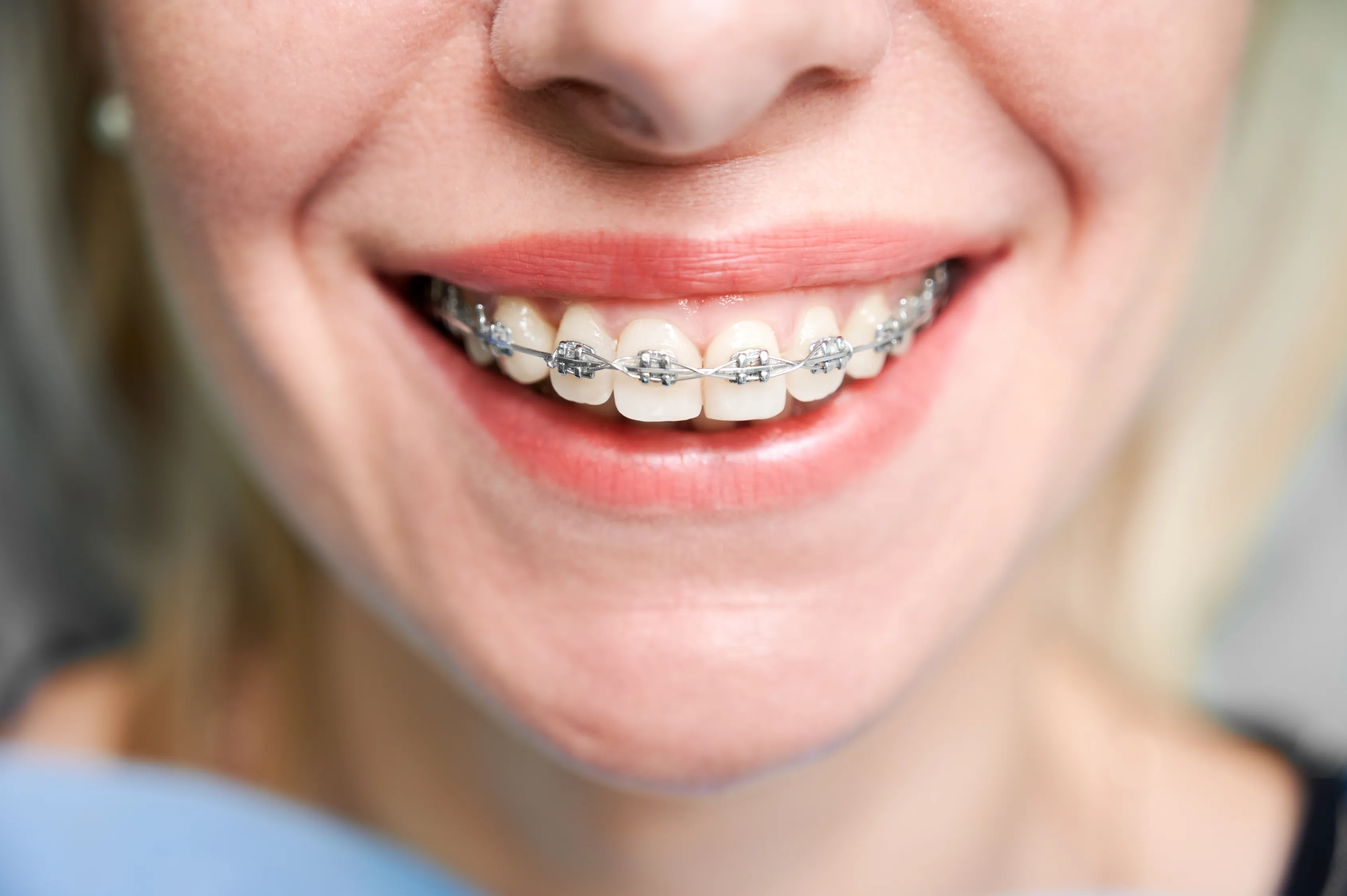Apart from improving their appearance, braces also assist the mouth’s function properly. Crooked or misaligning bites may eventually lead to jaw issues and make eating food difficult or impossible. Braces help the mouth function optimally by correcting these misalignments over time.
Teeth braces consist of small square brackets bonded onto each tooth’s front surface. These brackets serve as handles for arch wires which guide their movement; additionally a rubber band called an energy chain is connected to them for extra support.
Braces are a great way to improve your smile
Braces can help improve the aesthetics and health of your smile while also helping prevent dental conditions like gum disease. Braces also correct misalignments of teeth which lead to reduced ability to chew, gingivitis/periodontal disease, worn tooth enamel and TMD (temporomandibular joint dysfunction). Straighter teeth make cleaning and flossing simpler so less bacteria will collect on them over time and contribute to other health concerns.
Braces exert constant pressure on your teeth in order to do their work. This pressure can make your teeth wider by stretching or compressing the bone supporting them, or if necessary applying more pressure to one molar and moving it forward thereby making room for it on the opposite side. Your jaw can close more efficiently.
There are various kinds of braces on the market today, each offering distinct advantages and disadvantages. Traditional metal braces made of stainless steel feature small brackets attached to your front teeth by thin wires; ceramic options provide clear or tooth-colored brackets that complement your natural smile while being more costly than their metal counterparts but still achieve similar results.
Other solutions for straightening your smile include Invisalign clear aligners, which consist of transparent plastic trays that gradually shift your teeth. They may be beneficial for adults but may take longer to achieve your desired result.
Tooth reshaping is an excellent way to enhance your smile, used to correct irregularities in the shape of the teeth. This procedure may be performed simultaneously with orthodontic therapy or independently by a dentist specializing in this field. Reshaping can help repair chipped, fractured, gapped or discolored teeth as well as conceal dental staining.
They can reduce the risk of gum disease
Braces work to straighten teeth and align the bite by applying consistent light pressure over time to tooth roots. This forces bone and tissue surrounding their roots to shift shape as well as forcing teeth into new positions that may force receding or shrinking gums to recede or contract, potentially increasing risk for gum disease depending on how your gums look; for this reason it is crucial that good oral hygiene habits be observed while wearing braces such as using soft-bristled brushes more gently while attending regular dentist appointments to ensure healthy gums.
Gum disease is the body’s response to bacterial plaque, and can lead to the destruction of tissues surrounding the teeth. It progresses from gingivitis – in which gums turn red and swell – through gingivitis, periodontitis and loss of bone and tissue loss to periodontitis – though luckily braces treatment can still be offered if gingivitis progresses unchecked; seeing your dentist and orthodontist regularly for cleanings as soon as any symptoms manifest so any treatment areas can be addressed swiftly.
Gum disease can also result in the formation of pockets where bacteria collect. This problem may be further compounded by wearing braces, making it more difficult to brush and floss properly resulting in plaque build-up which, left untreated, hardens into tartar that irritates gums further and increases susceptibility to infection.
For maximum protection, it is important to brush and floss regularly with soft-bristled brushes using fluoride toothpaste, avoid smoking, consume foods high in sugar which contribute to tooth decay, wear a mouthguard at night time for grinding/clenching prevention due to stress or misalignments in bite alignment, or jaw problems, etc.
They can improve your speech
People wearing braces often worry that wearing them will have an adverse impact on their speech, yet these fears tend to be unfounded. While people with pre-existing speech problems may take longer to adjust from initial adjustments period, their problem should often resolve itself within months – not always due to crooked teeth but other issues such as an open bite or crowding of the teeth causing issues with speaking clearly.
Teeth braces consist of wires, elastic bands and metal brackets which attach to the front of your teeth using resin-based dental adhesive and serve as handles that keep an archwire in place. Modern orthodontic brackets can be colour matched or made out of clear plastic to further blend in. Braces come in both fixed and removable forms with removable options providing more convenient for patients when necessary.
At first, having braces can make their speech somewhat slurred as their tongue adjusts to having something new in their mouth when speaking. Pronouncing certain sounds may also be difficult because your tongue has changed positions or there may be inflammation around the mouth; to help combat this effect, practicing pronunciation and articulation regularly as well as adding salt water or mouth rinses will all aid.
These symptoms are harmless and will diminish after several weeks; some patients even find that their speech has improved as a result of wearing braces. Those still having difficulties should consult a speech therapist for guidance and exercises to strengthen their speech.
Malocclusions that lead to slurred speech typically result from crowding or misalignment between the upper and lower jaws, often due to crowding or misalignment between them. Most often these issues can be corrected using orthodontic treatments such as traditional braces, Invisalign or Lingual braces; but for more serious issues it may be worthwhile seeking advice from either a speech therapist or qualified dentist.
They can prevent bone loss
Teeth braces can be an effective way to enhance your smile and prevent bone loss, yet they require knowledge of their operation before you buy. Braces use stainless steel bands, brackets, and wires to gradually move teeth into their proper places – helping correct malocclusion while simultaneously decreasing crookedness of teeth and excess spaces between them. Furthermore, having an improved bite balance may help digestion as well as lower risk for gum disease.
Step one to prevent bone loss is visiting your dentist or orthodontist regularly for evaluation of periodontitis (inflammation of gums and bones around your teeth) which will allow a professional to recommend appropriate treatments. Periodontal disease causes red and swollen gums as well as possible tooth and bone loss if left untreated, so visit a professional as soon as you suspect signs of periodontitis forming!
At every point in our lives, the bones in your body are actively remodeling themselves by breaking down old bone and adding in new. While this process is perfectly natural and necessary for our wellbeing, excessive rates of bone resorption could lead to bone loss if this balance becomes imbalanced; placing you more at risk for injury or fracture.
Braces can help minimize these issues by limiting the amount of food and bacteria that gets stuck between your teeth, where food particles combine with bacteria to form acid that eats away at enamel, leading to tooth decay, cavities and gum disease. Misalignments also make chewing difficult leading to digestive issues.
Traditional metal braces consist of a band of stainless steel that wraps around your lower jaw, followed by fixed brackets attached to each tooth. An archwire passes through these brackets and helps move your teeth into their final positions; each bracket secures to it using elastic bands known as ligatures that can be changed between adjustment appointments – patients often select brightly colored ligatures for extra flair! Alternatively, other forms of braces don’t use ligatures at all but instead have built-in methods of holding the archwire in place that do not use elastic bands ligatures but have built-in methods of holding it to each bracket instead.
Disclaimer: The content on this blog is intended for general informational purposes only. It is not a substitute for professional medical advice, diagnosis, or treatment. Always consult qualified healthcare providers for personalized advice. Information regarding plastic surgery, dental treatment, hair transplant, and other medical procedures is educational and not a guarantee of results. We do not assume liability for actions taken based on blog content. Medical knowledge evolves; verify information and consult professionals. External links do not imply endorsement. By using this blog, you agree to these terms.










